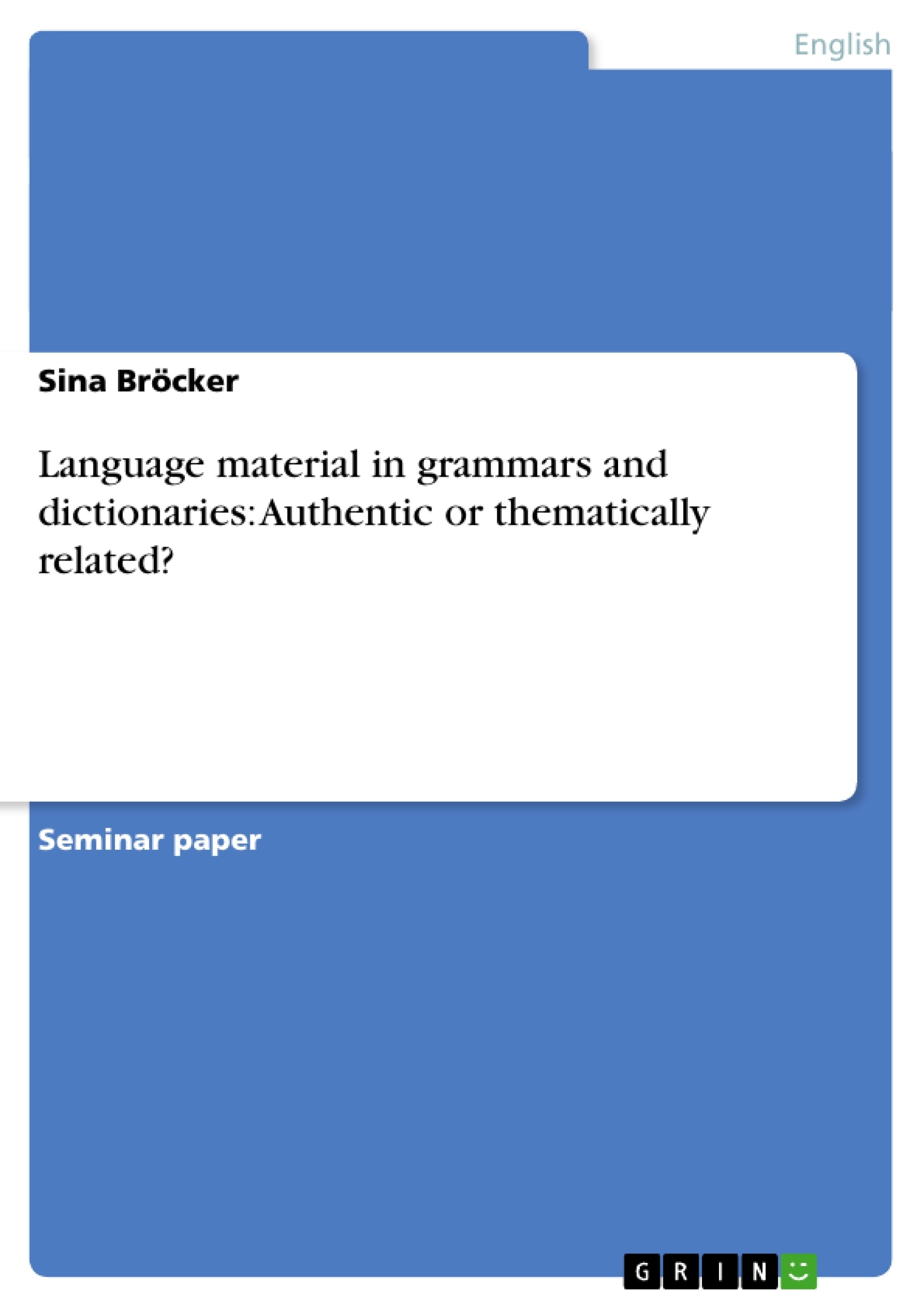The first dictionary was published in 1984. At that time the focus lay on lexicography especially on English as an international language. Nowadays nearly every three month new dictionaries appear. They are mainly published from publishing houses in Great Britain. This is due to the dominance which British lexicography won in the 1960s. When the first Longman Dictionary of Contemporary English appeared in 1978 British lexicography had finally won dominance to American lexicography. In 1987 the second edition of the Longman Dictionary of Contemporary English and the Collins COBUILD Dictionary of the English language appeared. These works were completely different to the ones before. According to Sidney I. Landau these works were “in many respects a daring departure from the customary practices of lexicography, and particularly of ESL lexicography” . They offered a new look at what the user needed. The aim of this paper is to take a closer look on these dictionaries to check whether they are working with authentic language material to explain words and how easy or difficult it is for a user to understand the explained issues.
In grammars the different features of a language are considered systematically. Spoken and written language material is described. Nowadays the grammarians are working together with Universities or at least base their entries on large databases that include millions of texts taken out of various forms of writing and communication situations. This system is meant to help to provide the use of authentic language material that is familiar to the grammar user. In the analysed grammars invented examples are avoided with the aim to offer the user a better access to the explained issue.
The aim of this paper is to analyse the used example solutions by keeping an eye on whether they are really authentic and easy to understand or not better than the invented ones that were often used in former times.
Inhaltsverzeichnis (Table of Contents)
- Introduction
- Short introduction of the grammars analysed in this paper
- The Collins COBUILD English Grammar
- The Oxford English Grammar
- The Longman Grammar of Spoken and Written English
- The Longman English Grammar
- Englische Grammatik heute
- The importance of real examples
- Real examples in use
- Usage in the Collins COBUILD English Grammar
- Usage in the Oxford English Grammar
- Usage in the Longman Grammar of Spoken and Written English
- Usage in the Longman English Grammar
- Usage in the Englische Grammatik heute
- The example solutions in grammars
- Dictionaries
- What is a dictionary?
- The Longman Dictionary of Contemporary English
- The Collins COBUILD English language dictionary
- The American Everyday Dictionary
- Comparison of the dictionary-entries
- Conclusion
Zielsetzung und Themenschwerpunkte (Objectives and Key Themes)
This paper analyzes various English dictionaries and grammars, examining their use of authentic language material to explain words and grammar rules. The main aim is to assess the accessibility of these materials for users, particularly learners of English.
- The importance of authentic language material in dictionaries and grammars.
- The different approaches taken by various dictionaries and grammars in using real-world examples.
- The accessibility of the examples for users, particularly in terms of clarity and understanding.
- The use of large databases and corpora in compiling grammatical and lexicographical information.
- The evolution of dictionaries and grammars, particularly the shift towards authentic examples.
Zusammenfassung der Kapitel (Chapter Summaries)
The introduction lays the groundwork for the paper, discussing the historical context of dictionary development and the rise of authentic language material in lexicography and grammar.
The next section introduces the various grammars analyzed in the paper, including the Collins COBUILD English Grammar, the Oxford English Grammar, the Longman Grammar of Spoken and Written English, the Longman English Grammar, and the Englische Grammatik heute. Each grammar is briefly described, with an emphasis on their approach to using real-world examples and their intended audiences.
Subsequent chapters delve into the specific use of real examples in each grammar. The focus is on how these examples are sourced, their intended function, and their accessibility for users. This analysis provides a comparative overview of the different strategies employed by the grammars in their presentation of authentic language material.
Schlüsselwörter (Keywords)
This paper focuses on the use of authentic language material in English dictionaries and grammars. Key terms include: lexicography, corpus linguistics, real-world examples, accessibility, grammar, dictionary, English as a Second Language (ESL), learners, and language corpora. The study explores the impact of the use of authentic examples on the clarity and comprehensibility of these materials for users.
- Quote paper
- Sina Bröcker (Author), 2003, Language material in grammars and dictionaries: Authentic or thematically related?, Munich, GRIN Verlag, https://www.grin.com/document/71923



